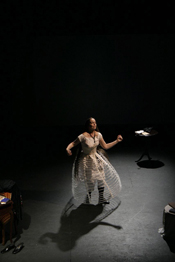The EBB Project //What She Wore
Creating EBB's Image
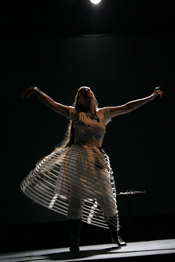
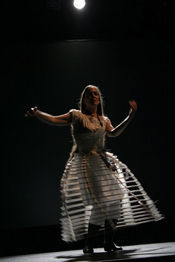
 Figure 1
Figure 1
 Figure 2
Figure 2
 Figure 3
Figure 3
Elizabeth Barrett Browning's closet is a kind of autobiography. Three images of her from 1858 (figure 1), 1860 (figure 2) and 1861 (figure 3) have become icons seen in most of her biographies and they are, among others, seen in my performance, The Consolation of Poetry. I have recreated what she wore in two images, 1858 and 1860, working in collaboration with the many artisans credited below. These historic period reproductions will soon become part of the Armstrong Browning Library collection.
These three mid Victorian images of Elizabeth, and what has been presumed about them, have also fashioned our perception of her. When I opened Elizabeth's 'closet autobiography' I found another story. Some of that story is told in The Consolation of Poetry through four dressing interludes, during which I don, in stages, what she wears in her 1858 portrait (Figure 1). However, in that performance EBB appears first as a video projection and she is dressed as she was in the 1860 photograph taken of her and her son in Rome by Alessandri (figure 2). The 1860 photograph of EBB was taken about a month after her twelve controversial political poems, Poems Before Congress, were published. Figure 2 is Variant B of this photograph.

Figure 4
In Figure 4, I am superimposed over Variant A, wearing the reproductions of what EBB wore during this 1860 photo shoot. I chose the color magenta as the color was named for the blood shed during the battle of Magenta (1859), an important battle during the Italian Risorgimento: a battle that EBB alluded to in her Poems Before Congress.
When I become Elizabeth in The Consolation of Poetry, I am dressed as she was in her 1858 Le Havre image. The engraving (figure 1), made from the original 1858 Le Havre ambrotype now believed to be lost, was eventually used as the frontispiece of the fourth edition of EBB's poem / novel Aurora Leigh.

Figure 5
I am seen becoming EBB in figure 5, sitting at a vanity wearing her black under-sleeves and chemisette. The Dresser, played here by Jomarie Ashley Soszynski, is about to hand me Elizabeth's Ringlets. Go to Performance to see more images of the 1858 garments.
The reader can find more details regarding my performative use of these three images in the script and endnotes for The Consolation of Poetry published in the fall 2003 issue of The Drama Review, and by viewing the slide show below. More information can be found in my unpublished article: "Creating Elizabeth Barrett Browning's Image. What She Wore and what it means." Some of the material in that article was presented in a lecture before the Boston Browning Society and the New England chapter of the Costume Society of America at Prescott house in Boston Massachusetts on April 18, 1999. A lecture was also presented February 14, 2012, and the reproductions of EBB's mid-Victorian clothing, jewelry and small props from The Consolation of Poetry were on exhibit at The Armstrong Browning Library for the month February 2012.
The following artisans have re-created Elizabeth's mid Victorian garments:
Underpinnings (chemise, pantaloons, petticoats): Dr. Ruthann Davis Bell
Mid Victorian cage crinoline: Heritage Reproductions
EBB's Wrapper: Erica Mason, Henry Ford Museum
EBB's 1860 garments: Dr. Ruthann Davis Bell
EBB's 1858 garments: Jomarie Ashley Soszynski
EBB's ringlets: Jim McGough, Virginia Opera House
EBB's 1851 Bonnet: Cynthia Amneus, Cincinnati Art Museum.
EBB's Parasol: Elizabeth Hocker

The Speaker, wearing EBB's ivory linen wrapper during Dialogue 1, "The Consolation of Poetry." (EBB's 1860 garments can be seen on the mannequin in the background.)

EBB's 1851 Bonnet as described in a letter to her sister. Recreated by Cynthia Amneus.
The many details of EBB's dress have been carefully researched and authentic equivalents have been found: EBB's Victorian hair jewelry, the malachite brooch given to her by Robert Browning on their 8th wedding anniversary, the hand made lace trim on her garments, Venetian glass buttons and silk tassels, her mid Victorian paisley shawl and her black silk chantilly lace cap with lappets. All of these are museum quality details that are used in performance and as part of installations with the visual art of The EBB Project.
BECOMING EBB
Photos by Nate Baker taken at NY's Mazer Theater
August 2005 Performance of 'The Consolation of Poetry'
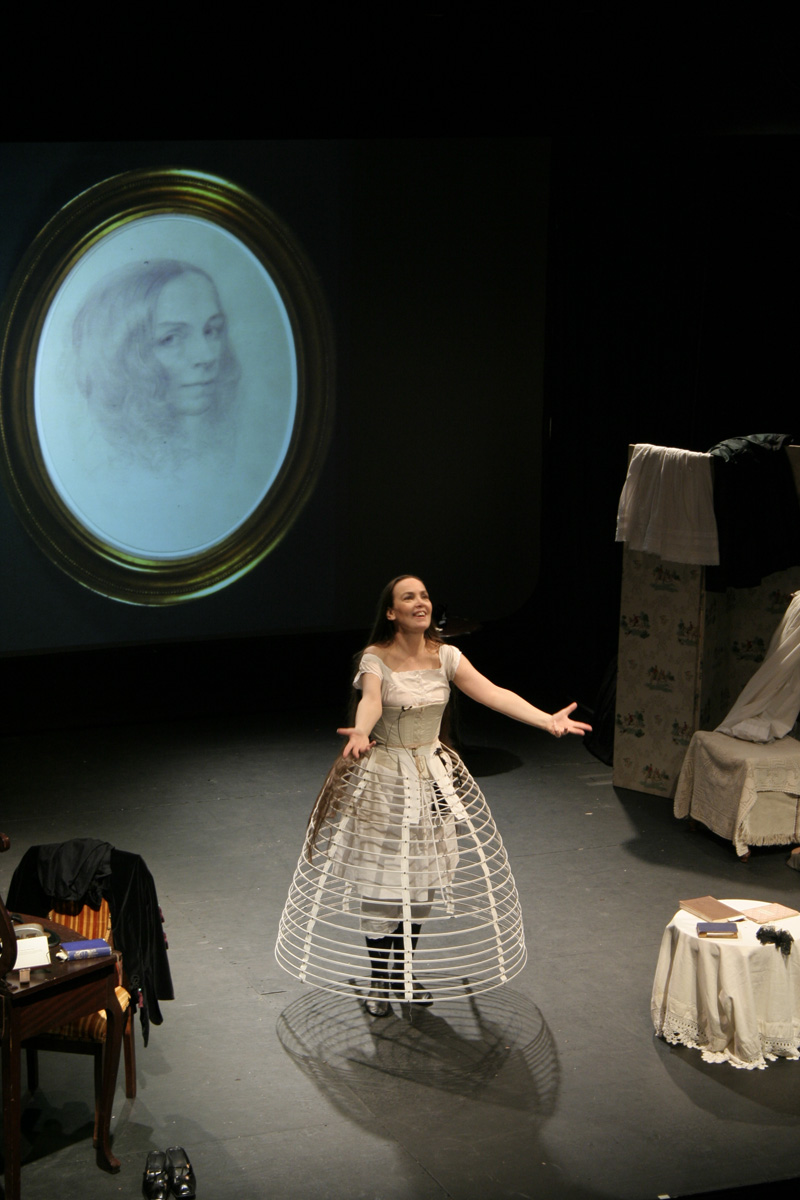
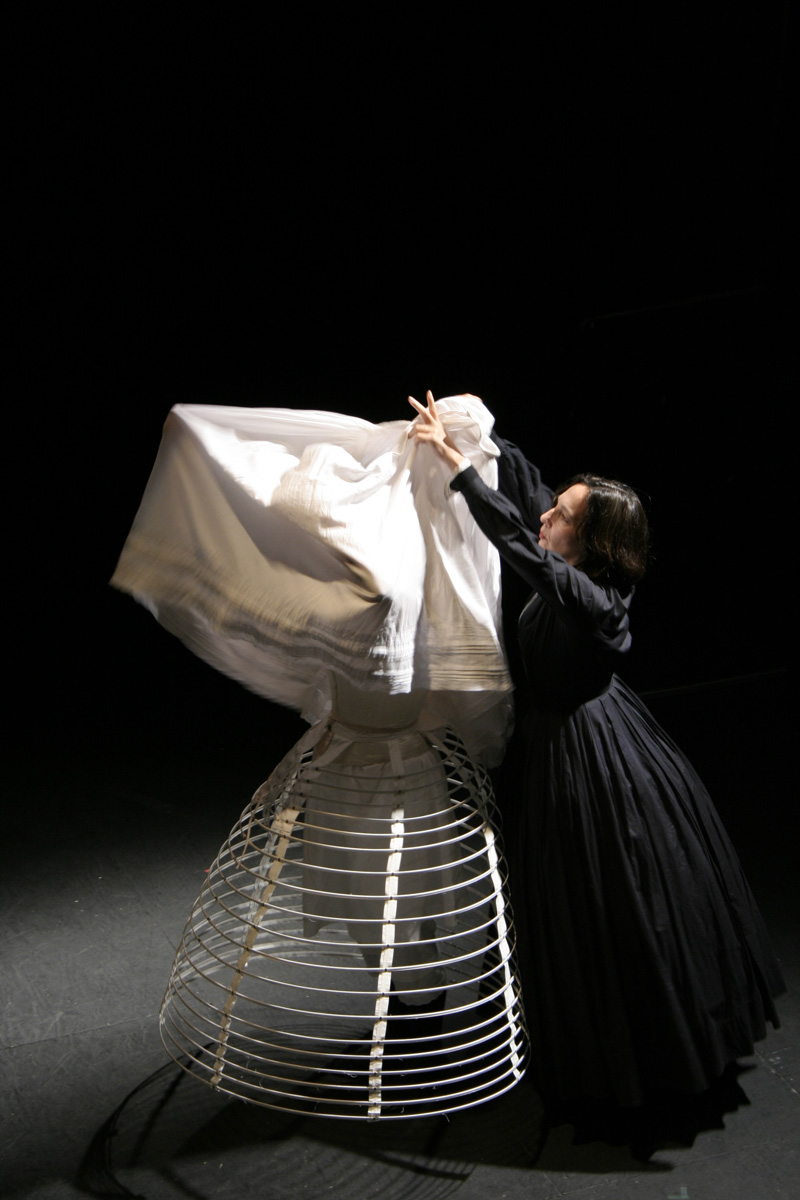

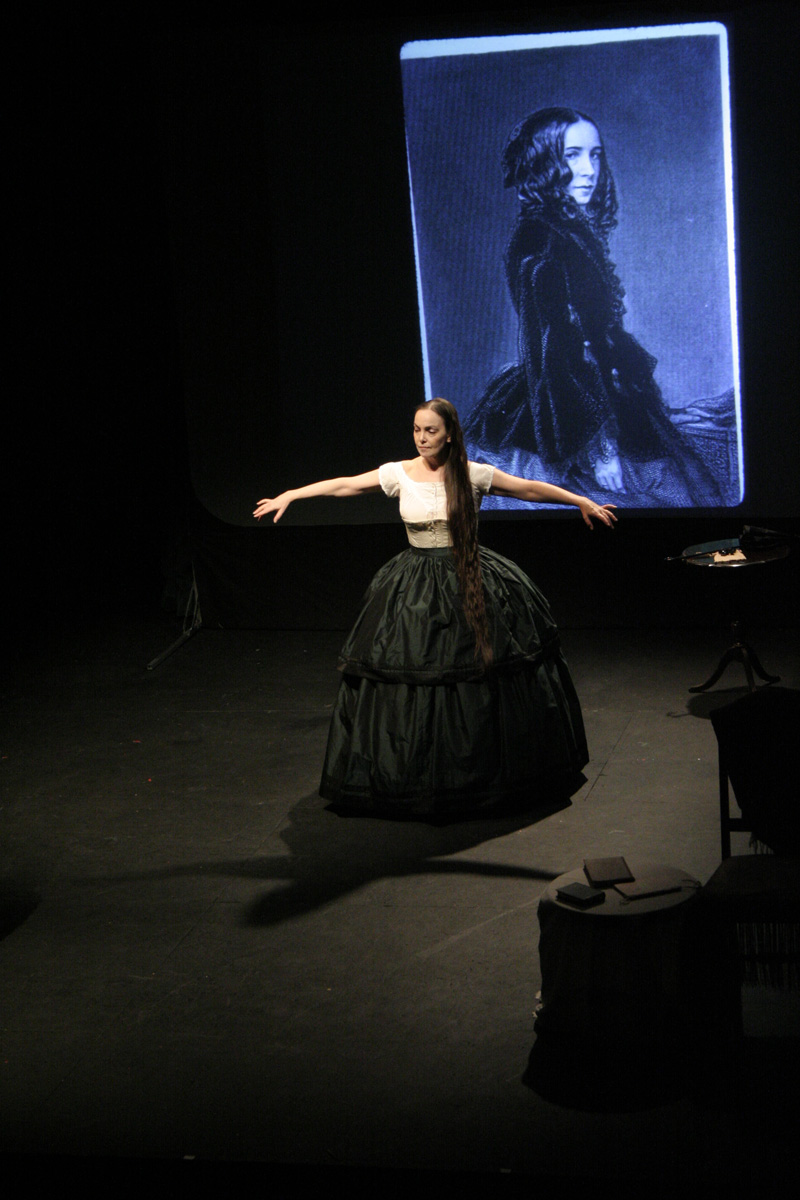
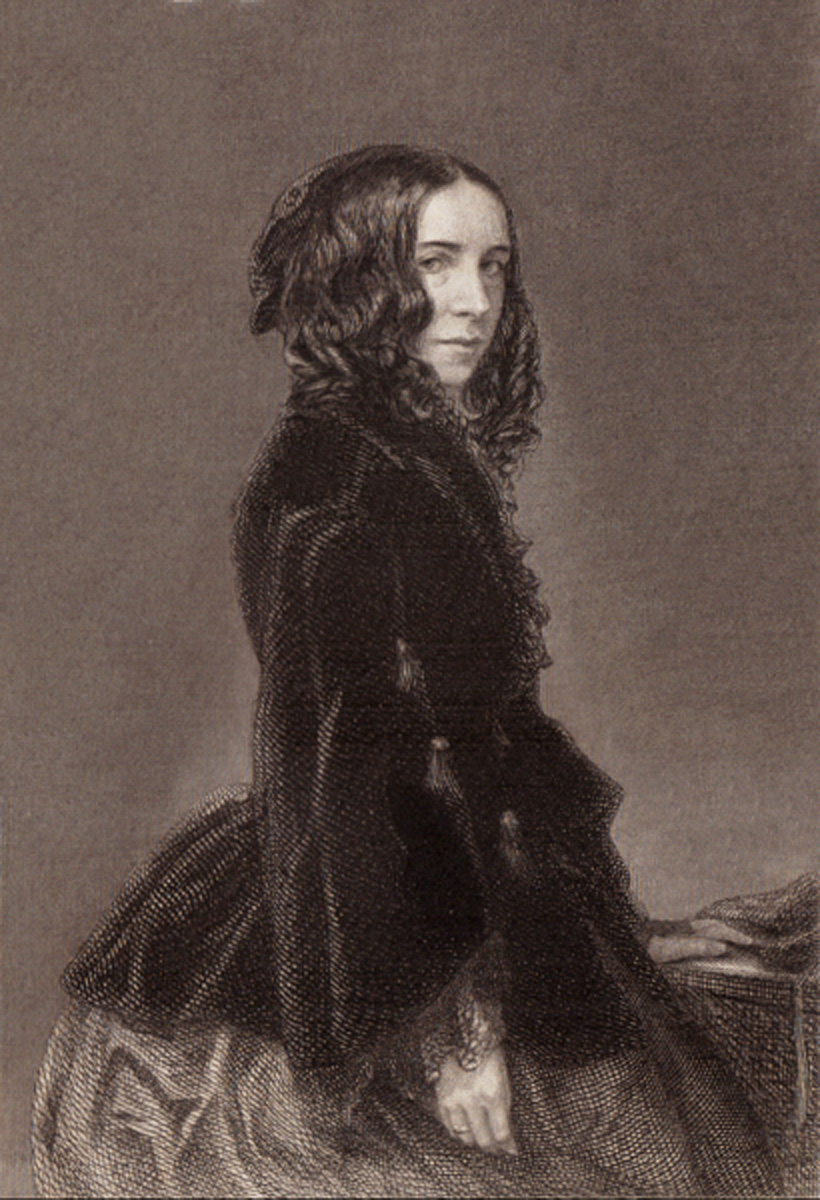
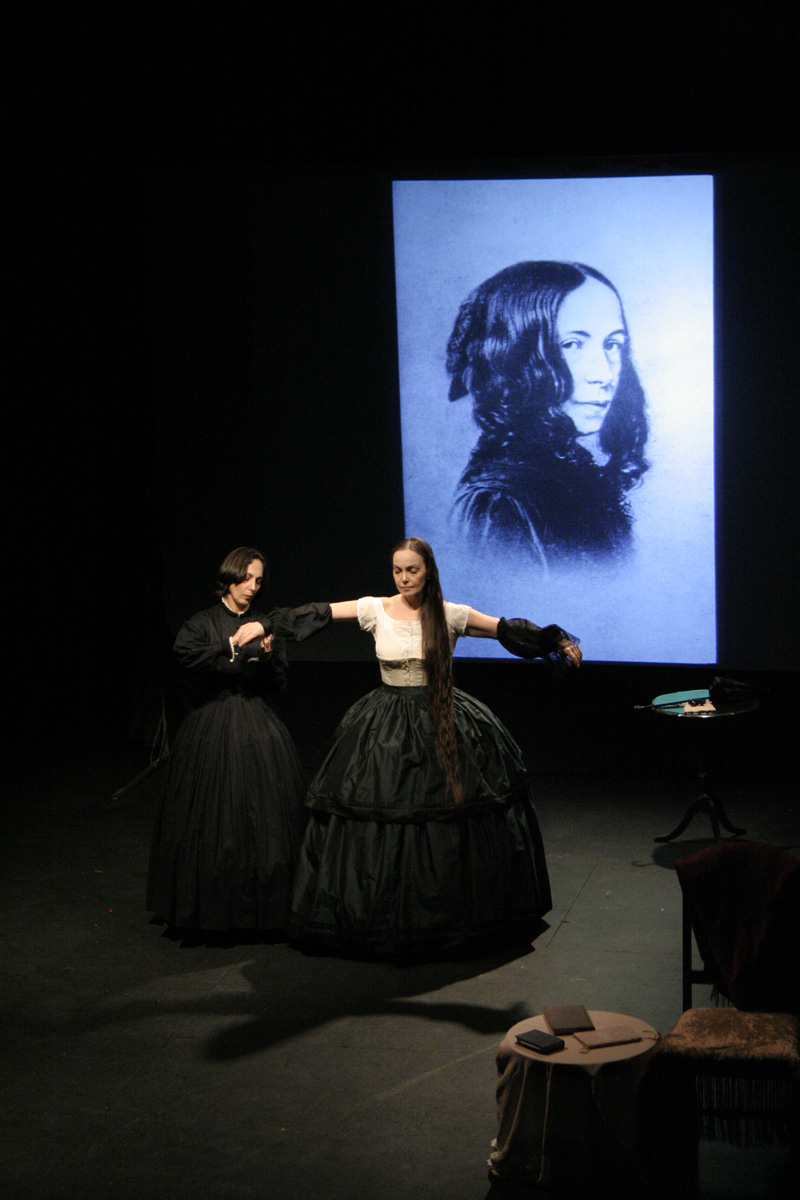
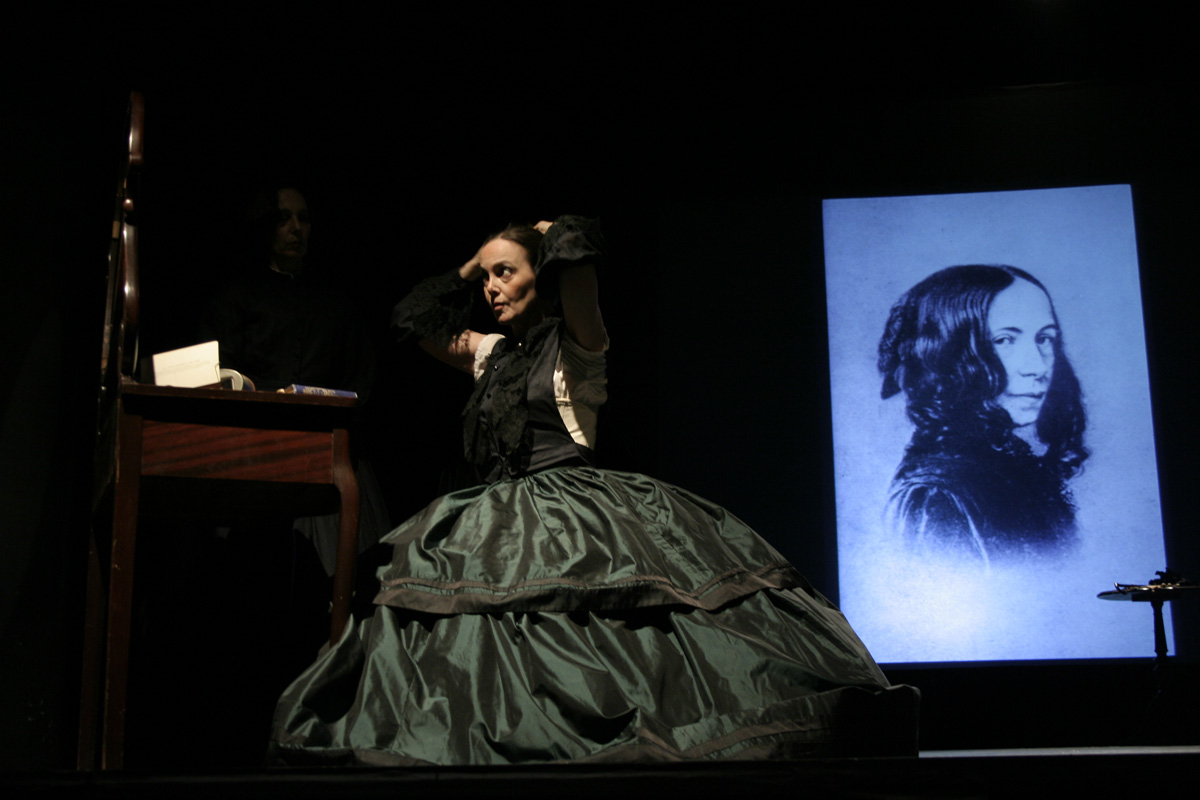


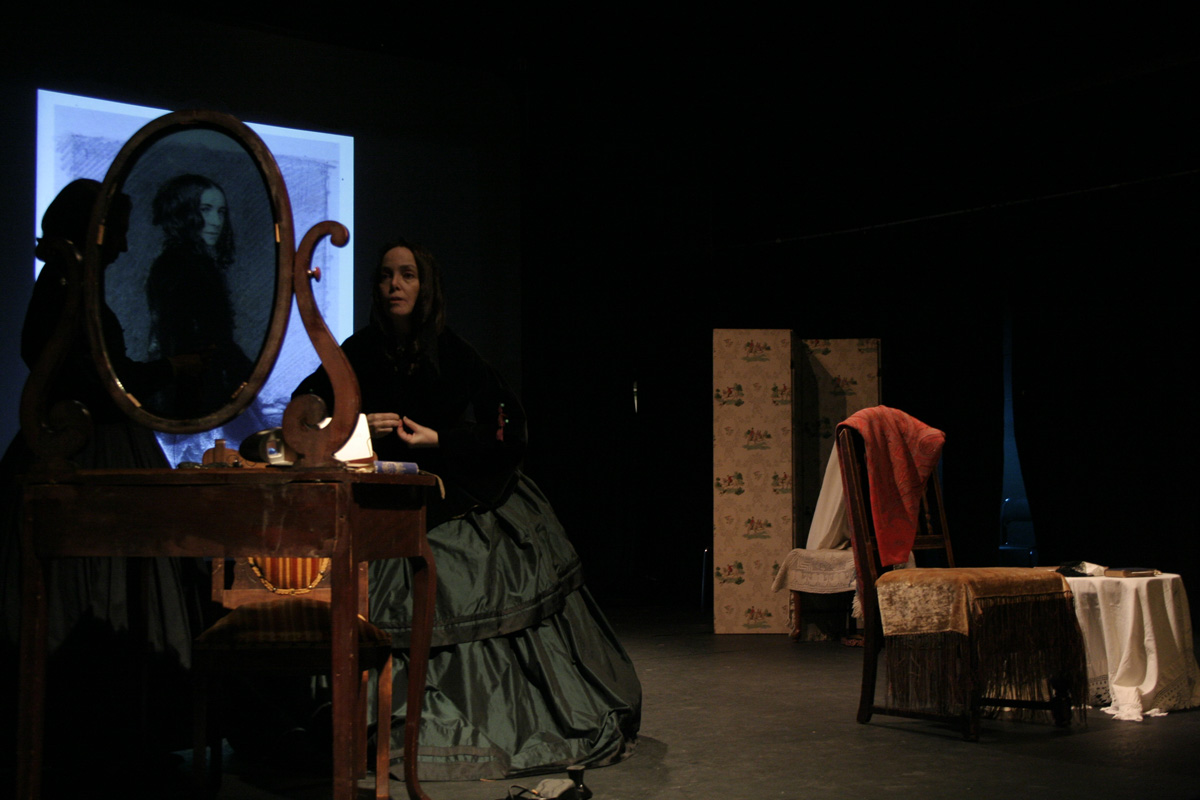
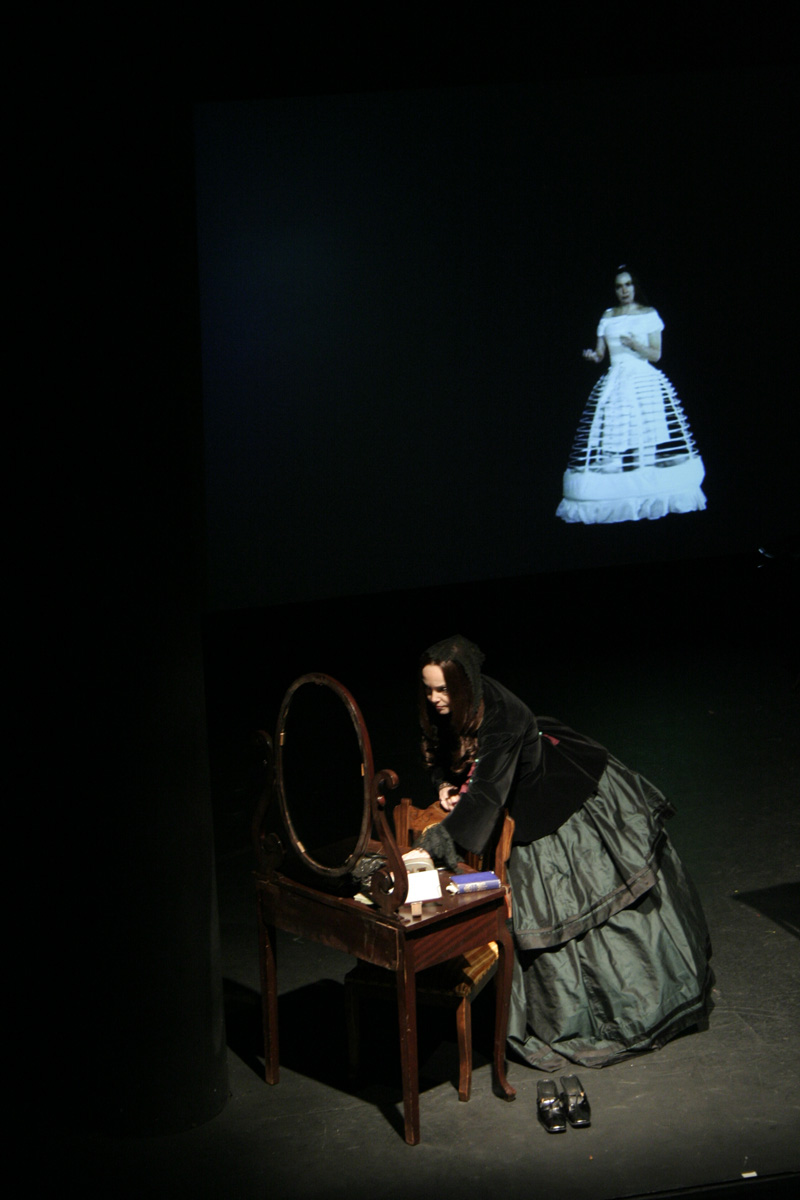

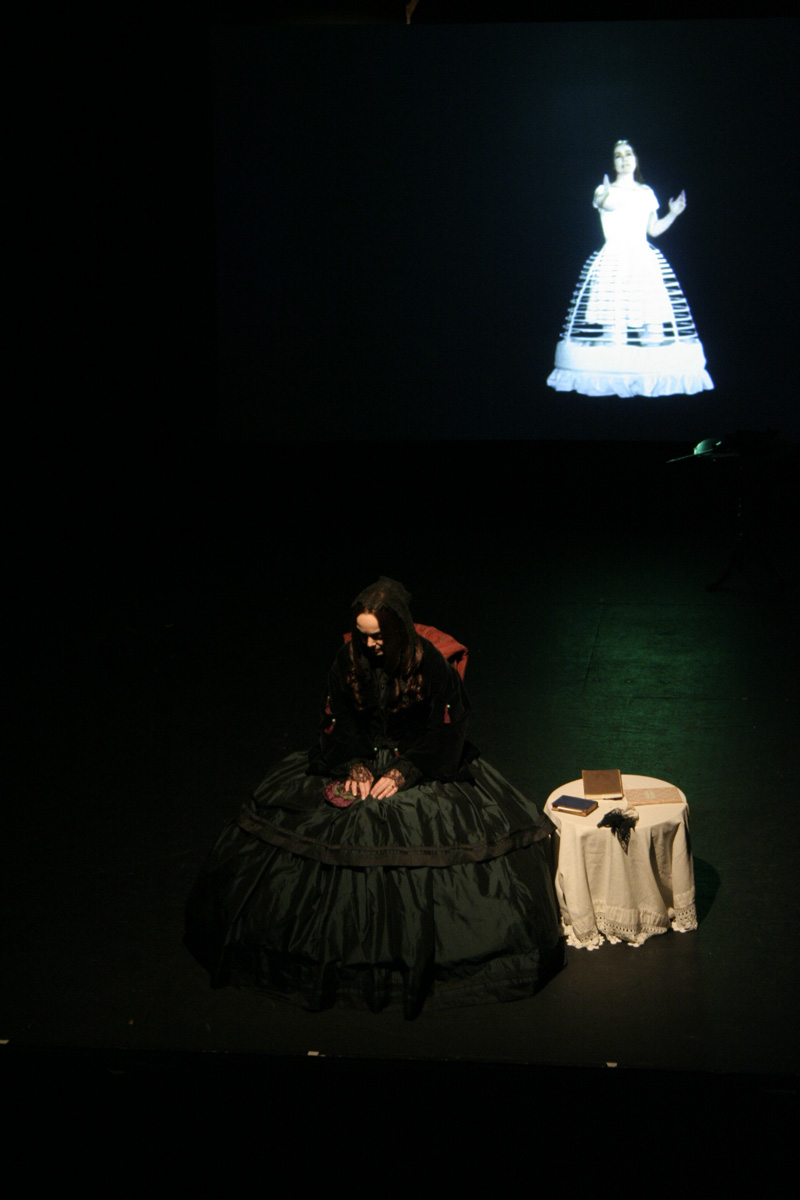
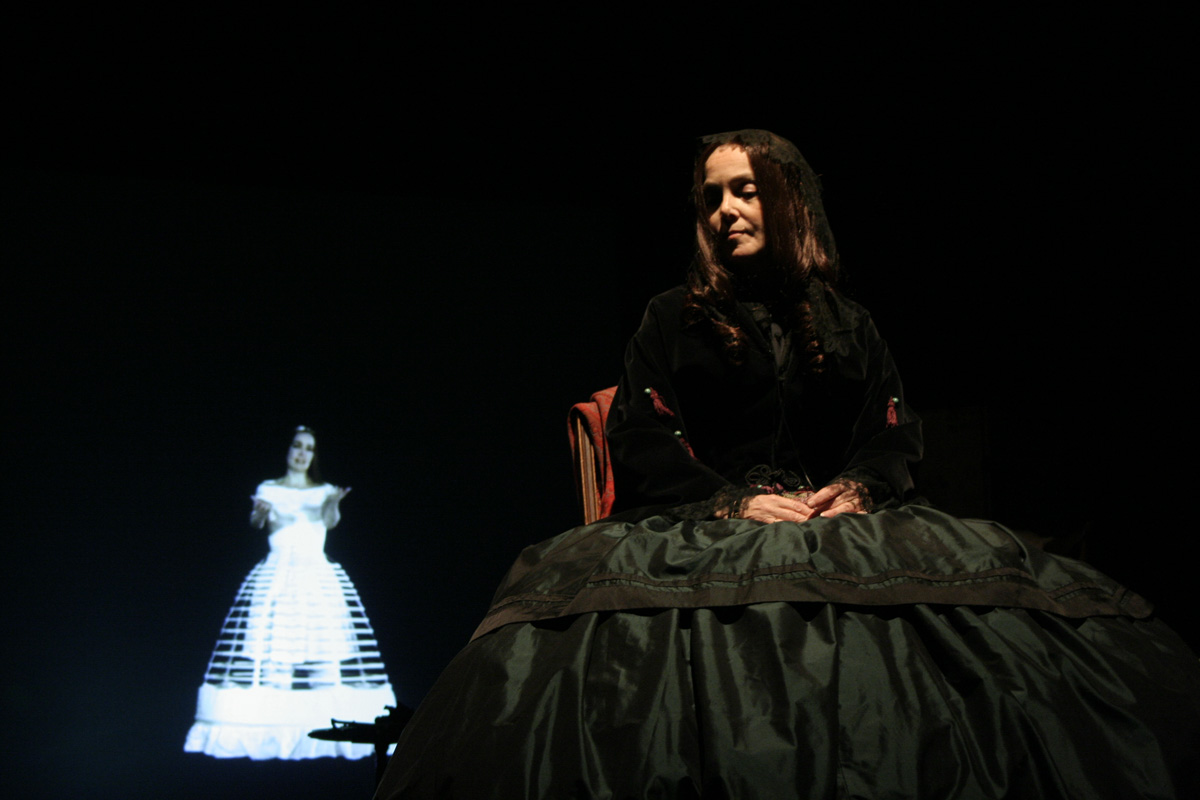
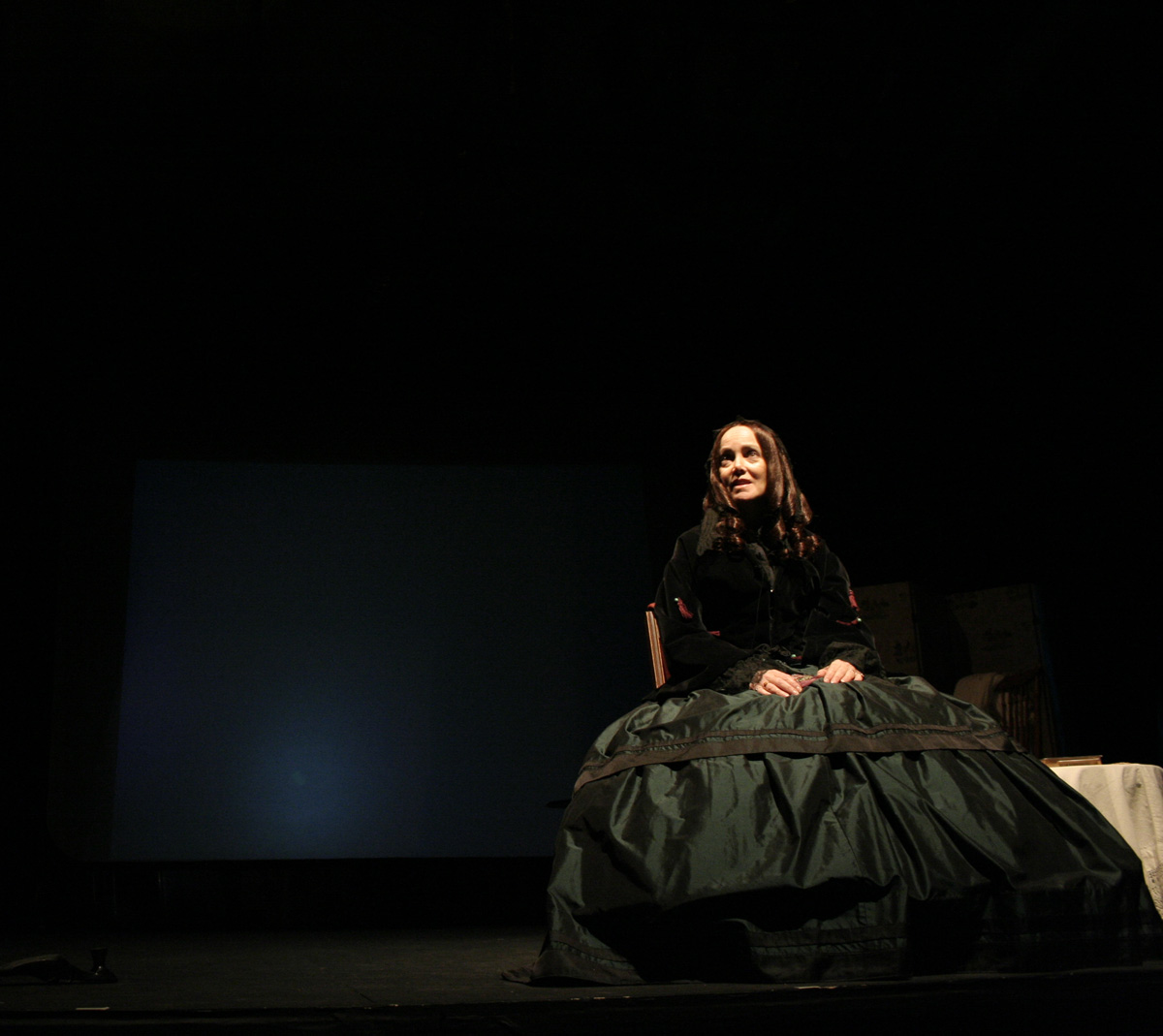



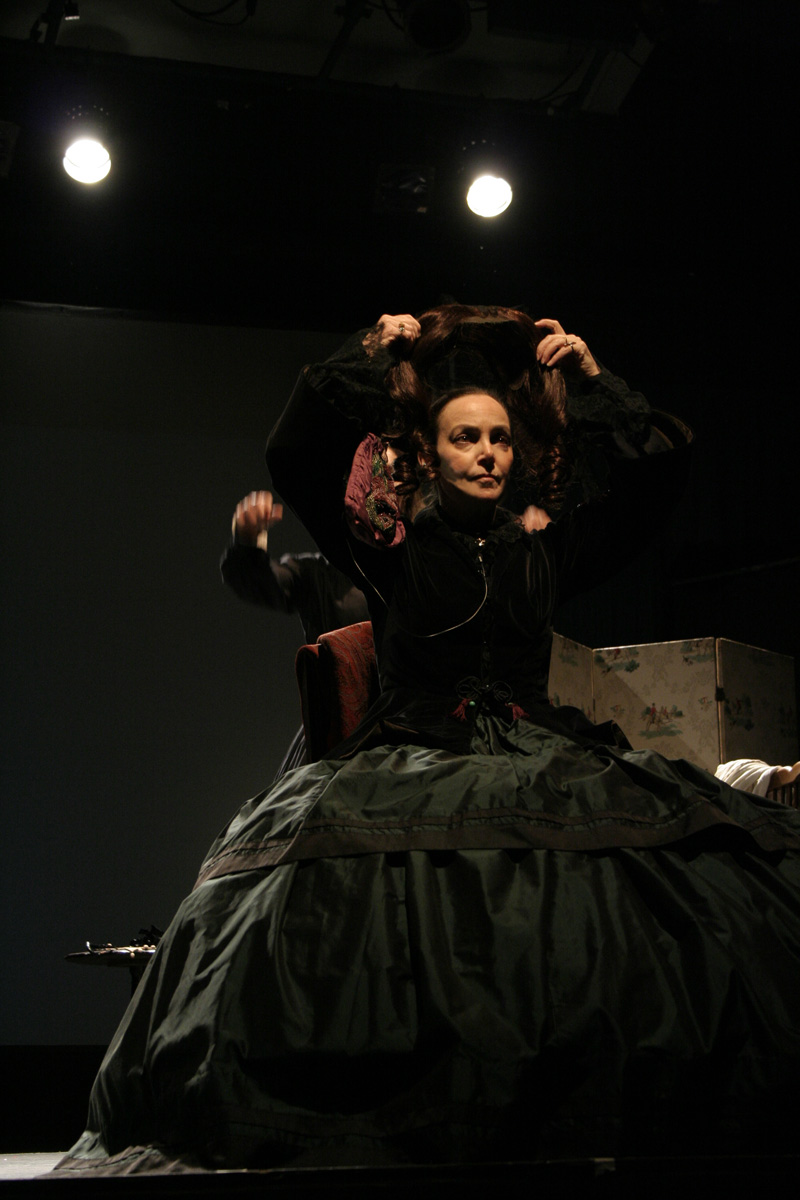
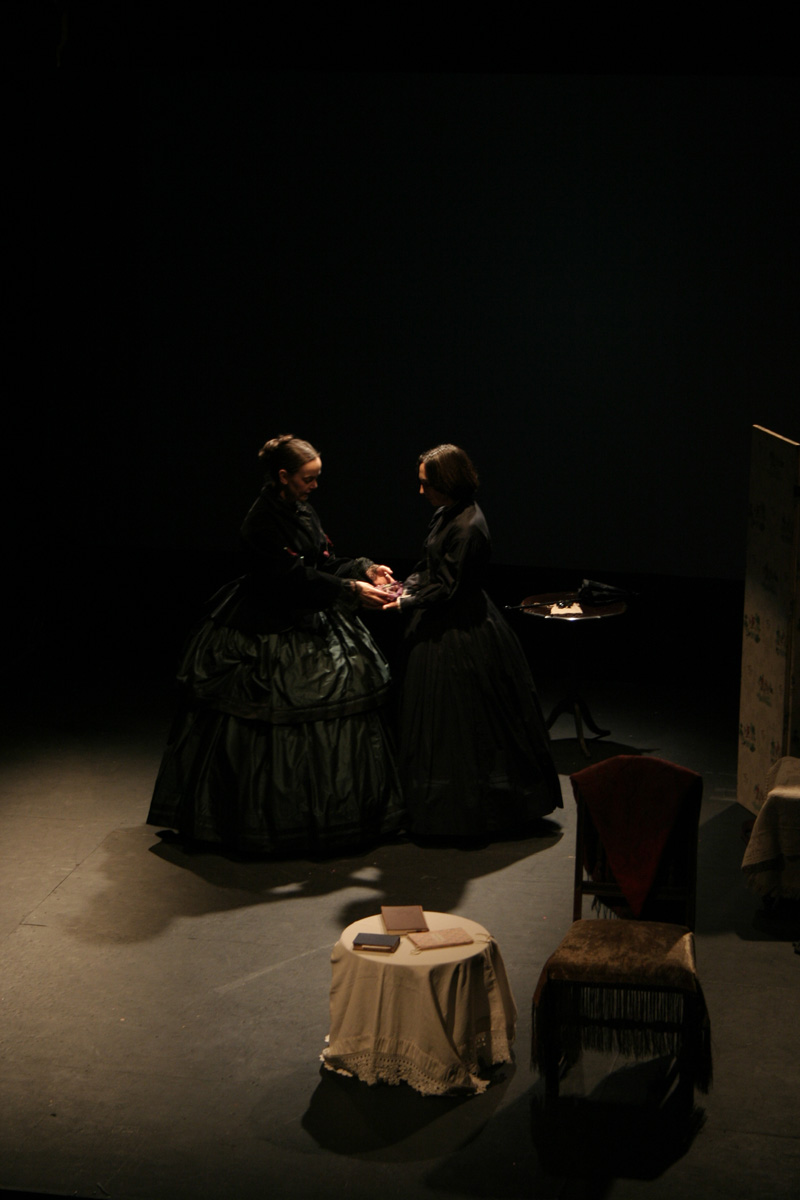
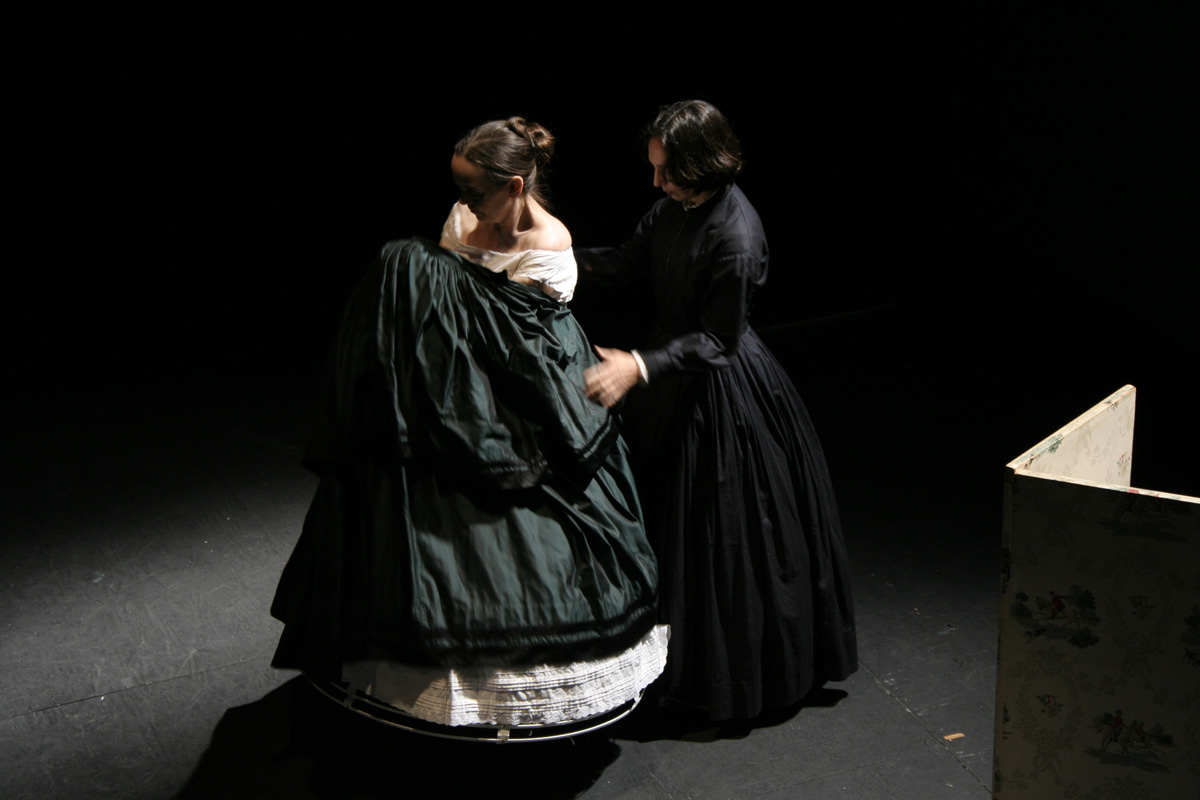

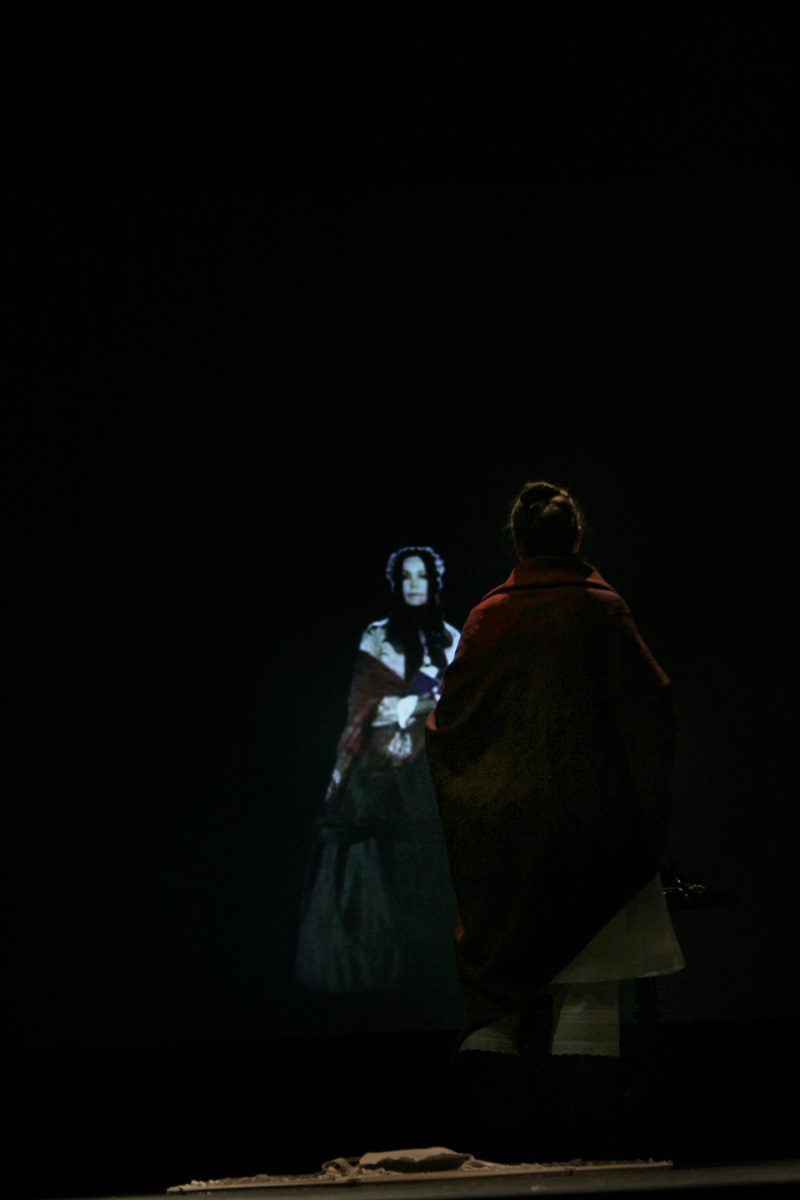
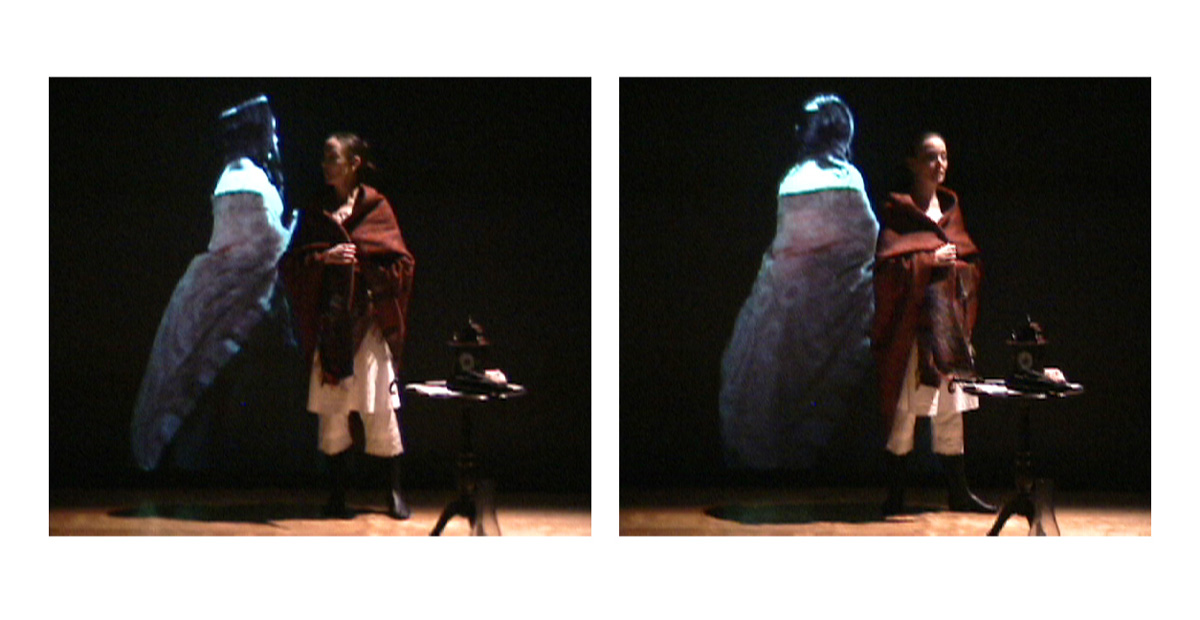

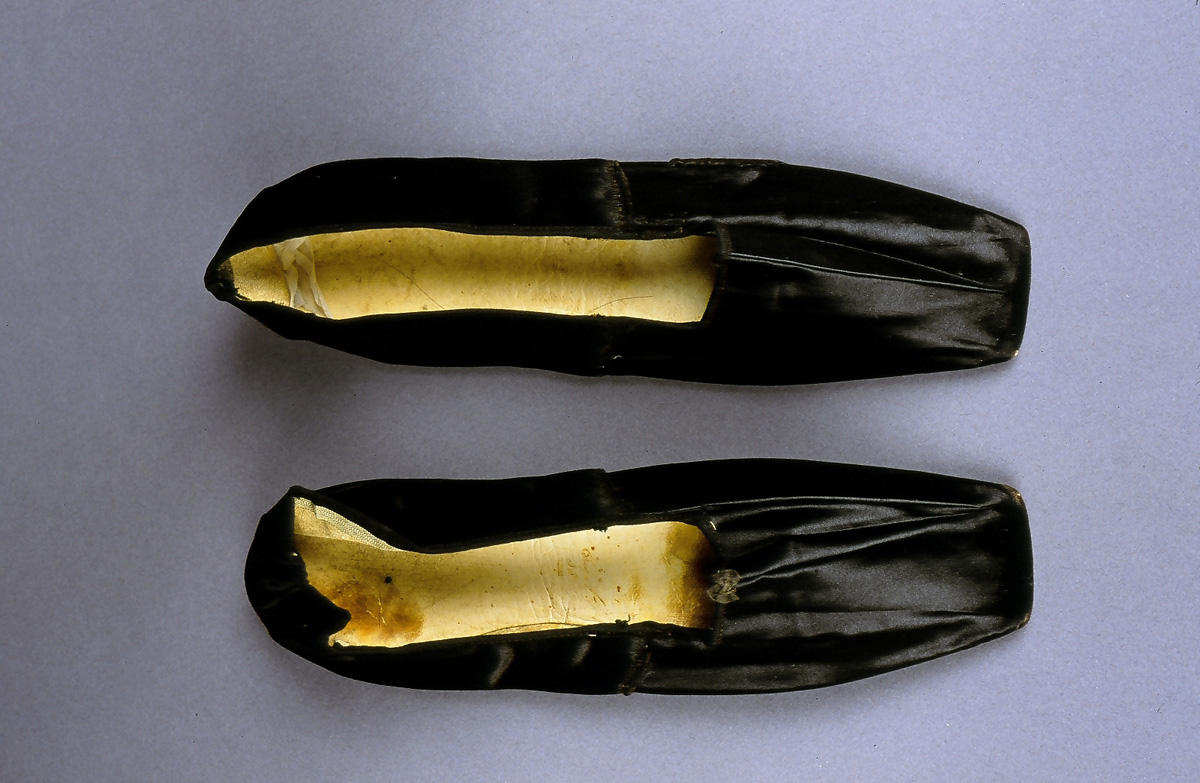
Likenesses of Elizabeth Barrett Browning are from the Armstrong Browning Library, Baylor University, Waco, Texas. Images from Wellesley College Library, Special Collections, Wellesley, Massachusetts and the New York Public Library Henry W. and Albert A. Berg Collection of English and American Literature were also used in the reconstruction of her garments. Harold Koda, The Costume Institute, Metropolitan Museum of Art, New York and Phyllis Magidson, Curator of Costume and Textiles, Museum of the City of New York graciously allowed me access to their collections.
